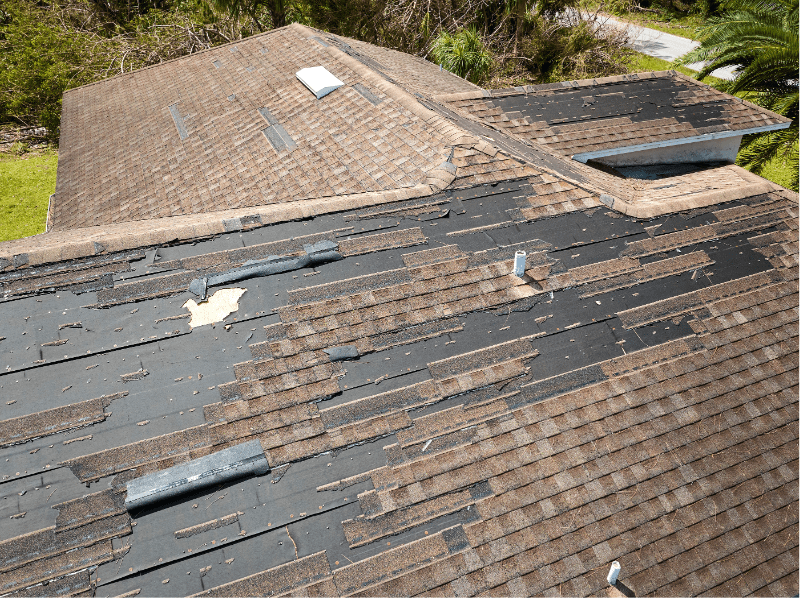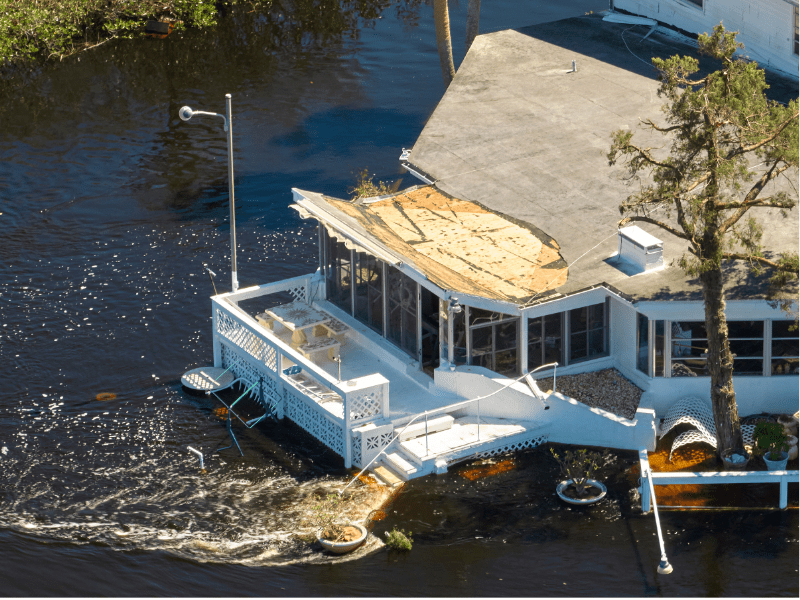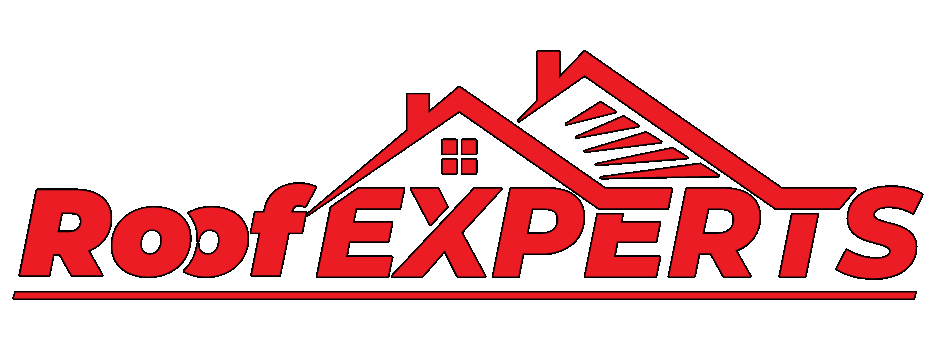Among the most critical areas of your home to safeguard is the roof, which serves as the first line of defense against the destructive forces of hurricanes. If you’ve recently weathered a storm and see visual damage to your roof, or if you suspect the roof of your Florida home may have sustained damage after harsh weather, understanding how to identify and address hurricane roof damage is paramount.
Whether you’re facing the aftermath of a recent hurricane or gearing up for the season ahead, the storm damaged roofing experts at Roof Experts in Brevard County aim to equip you with the knowledge needed to protect your home and family.
How to Identify Hurricane Roof Damage
When it comes to safeguarding your home against the aftermath of a hurricane, identifying potential roof damage is key. From conducting visual inspections to uncovering hidden indicators like missing roof shingles, mold growth, or water stains on ceilings or walls, understanding how to identify roof damage effectively empowers Florida homeowners to take proactive measures to protect their property.
Looking for Missing or Displaced Shingles
Conduct a thorough visual inspection of your roof to identify any missing shingles or displaced roofing shingles. Walk around the perimeter of your home and scan the roof’s surface for areas where shingles may be torn, lifted, or entirely missing. Pay close attention to corners, edges, and areas where the roof meets other structures, as these are common spots for shingle damage during hurricanes.
Checking for Signs of Water Damage
Inspect the interior of your home for signs of water damage, such as water stains on ceilings or walls. Look for discolored patches or streaks in these vulnerable areas. Locations that appear darker or have a yellowish tint are a common sign of water infiltration caused by hurricane roof damage. Water stains may indicate that water has penetrated through the roof and into the interior of your home. Trace the source of the water stains back to the roof to identify potential areas of damage.
Assessing for Structural Integrity
Perform a site assessment from ground level and look for any visible signs of structural damage to the roof, such as sagging or uneven areas. Use binoculars if necessary to get a closer look at hard-to-reach areas. Additionally, inspect the gutters and downspouts for any debris or granules from damaged shingles, as this may indicate roof damage.
Attic Inspection
If it is safe to do so, venture into your attic to inspect the underside of the roof for signs of damage. Look for water stains, dampness, or signs of mold growth on the underside of the roof decking. These are indicators that water may be infiltrating damaged areas of the roof.
Ceiling Stains
Examine the ceilings of your home for any discoloration, water stains, or peeling paint. These signs suggest that water has seeped through the roof and into the interior of your home. Pay attention to areas directly below where the roof may have sustained damage.
Mold Growth
Mold thrives in moist environments, making it a common indicator of water infiltration through the roof. After a hurricane, look for mold growth, particularly black mold like Stachybotrys chartarum or green mold like Aspergillus, by inspecting damp or water-damaged areas, as they can pose health risks and require immediate remediation. Signs of mold growth include musty odors, visible patches of mold on walls or ceilings, discolored or stained areas, peeling paint or wallpaper, and respiratory symptoms such as coughing or sneezing when indoors.
Assessing Insurance Coverage for Hurricane Roof Damage

Your homeowners’ insurance company typically provides coverage for roof damage caused by hurricanes. However, the extent of coverage and specific terms may vary depending on the insurance policy. It’s essential for homeowners to review their insurance policy carefully to understand what is covered and any limitations or exclusions that may apply to hurricane-related damage.
Specific Coverage for Hurricane Roof Damage
Many Floridian homeowners’ insurance policies include specific provisions for hurricane damage, which may differ from standard coverage for other types of hazards. These provisions may encompass windstorm damage, water damage resulting from hurricanes, and additional living expenses incurred due to temporary displacement from your home.
Review your policy’s declarations page or contact your insurance provider to clarify the extent of coverage for hurricane roof damage and any additional endorsements that may be available to enhance the protection of your roof.
Steps to Take When Filing a Claim for Hurricane Roof Damage
Filing an insurance claim for hurricane storm damage can be a complex process, requiring careful documentation and adherence to your insurance company’s procedures. When filing a claim, follow these essential steps:
- Document the Roof Storm Damage: Take photographs or videos of the damage to your roof, as well as any interior damage to your home caused by water infiltration. Keep detailed records of the date and time of the hurricane, as well as any relevant weather reports or official warnings.
- Contact Your Insurance Provider: Notify your insurance company as soon as possible to report the hurricane roof damage and initiate the claims process. Provide them with accurate and thorough information about the extent of the damage and any temporary repairs that have been made to prevent further harm.
- Schedule an Inspection: Your insurance company may arrange for a claims adjuster to inspect the hurricane roof damage and assess the extent of the loss. Cooperate fully with the claims adjuster and provide them with access to your property to facilitate a thorough assessment.
- Keep Records of Expenses: Keep track of any expenses incurred as a result of the hurricane roof damage, including temporary repairs, accommodations, and additional living expenses. These expenses may be eligible for reimbursement under your insurance policy, so be sure to retain receipts and documentation for your records.
- Review Settlement Offer: Once your insurance company has evaluated your claim, they will provide you with a settlement offer detailing the coverage and benefits provided under your policy. Review the offer carefully and seek clarification on any aspects that are unclear or require further explanation.
Steps to Take After Identifying Hurricane Roof Damage
Identifying hurricane roof damage is just the first step in the process of protecting your home and ensuring its structural integrity. Once damage has been identified, it’s crucial to take prompt action to address the issues and prevent further deterioration.
Document the Damage
Begin by documenting the extent of the damage to your roof. Take photographs or videos from multiple angles to capture the full scope of the damage. Be sure to include close-up shots of any missing or damaged shingles, as well as any signs of water infiltration or structural compromise. This documentation of hurricane roof damage will be valuable when filing insurance claims or working with local roofing contractors.
Make Temporary Repairs
If it is safe to do so, make temporary repairs to your roof to prevent further damage. Cover any exposed areas with tarps or waterproof materials to keep out moisture and debris. Temporary roof repair can help minimize the risk of additional water infiltration and protect your home’s interior until permanent repairs can be made.
Assess Interior Damage
Inspect the interior of your home for signs of water damage or leaks resulting from the roof damage. Check ceilings, walls, and attic spaces for water stains, dampness, or mold growth. Address any immediate concerns to prevent further damage to your home’s structure and ensure the safety and comfort of occupants.
Contact Your Insurance Provider
Notify your homeowner’s insurance provider of the hurricane roof damage and initiate the hurricane insurance claim process. Be prepared to answer questions about the cause and extent of the hurricane roof damage and cooperate fully with the claims adjuster throughout the process.
Schedule Roof Repairs
Once you have filed a claim with your insurance provider, contact a reputable roofing contractor in Brevard County to schedule roof repairs or replacement. Choose contractors with experience in handling hurricane roof damage and ensure they are licensed and insured. Be sure to discuss the scope of the repairs, materials to be used, and timelines for completion with your chosen contractor.
Follow Up With Insurance Claims
Stay in communication with your insurance provider throughout the claims process to ensure that your claim is processed in a timely manner. Provide any additional documentation or information requested by the insurance company, and follow up on the status of your claim regularly. Be prepared to negotiate with your insurance provider if necessary to ensure that you receive fair compensation for the hurricane roof damage to your home.
Proactive Measures to Protect Your Roof
Protecting your roof from hurricane damage requires proactive measures to reinforce its strength and resilience. By taking preemptive actions, homeowners can mitigate the risk of extensive damage and ensure their homes are better prepared to withstand the impact of severe weather conditions.
Regular Maintenance and Inspections
Implementing a regular roof maintenance schedule is essential for identifying and addressing potential issues before they escalate into significant problems. Schedule annual roof inspections with roofing professionals to assess the condition of your roof and identify any signs of wear, damage, or deterioration.
Investing in Hurricane-Resistant Roofing Materials
Consider installing impact-resistant shingles, metal roofing, or concrete tile roofing that are designed to withstand extreme weather conditions. These durable roofing materials can help minimize the risk of damage and reduce the need for frequent repairs or replacements in the event of a hurricane.
Reinforcing Roof Structures
Consider reinforcing roof trusses, rafters, and other support structures to improve their stability and resilience. Installing hurricane straps or clips can also help secure the roof to the underlying framework, reducing the risk of uplift and structural failure during high winds.
Avoid Hurricane Roof Damage with the Help of Our FL Roofing Experts
Don’t wait until it’s too late to protect your home from hurricane roof damage. Trust our FL roofing experts to help safeguard your property against the destructive forces of severe weather. Schedule an inspection with our team today to assess the condition of your roof, identify potential vulnerabilities, and implement proactive measures to reinforce its strength and resilience.
With our expertise and guidance, you can rest assured knowing that your home is prepared to weather the storm and stand up against hurricane roof damage. Contact us now by calling (321) 313-5680 or filling out our convenient online contact form for a free roof inspection in FL.

